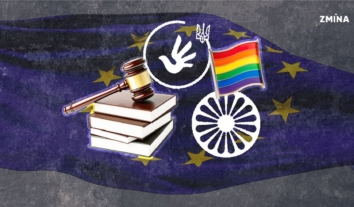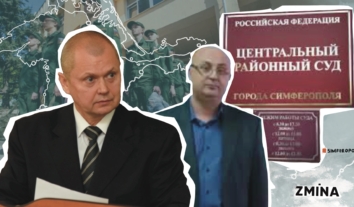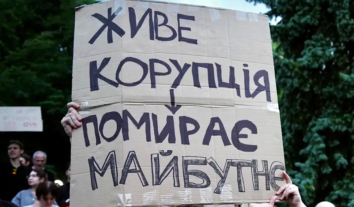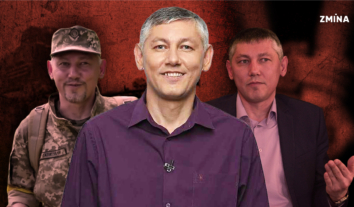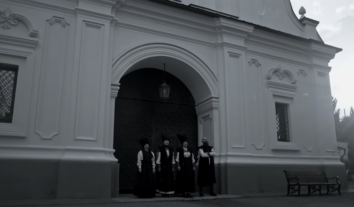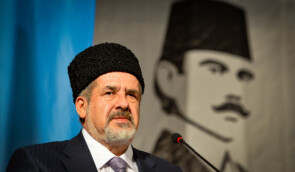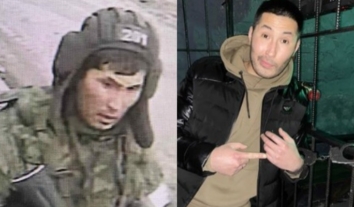11 years of oppression and repression: how human rights in occupied Crimea are approaching zero
The overall human rights situation in the temporarily occupied Crimea was already dire before the full-scale Russian aggression and was deteriorating from year to year. However, the analysis of the curtailment of rights and freedoms since 24 February 2022 shows that a regime of real terror against the local population has been imposed on the peninsula.
Read about the events, figures and trends in the field of human rights in the temporarily occupied territory in the overview material dedicated to the Day of Resistance to the Occupation of Crimea.
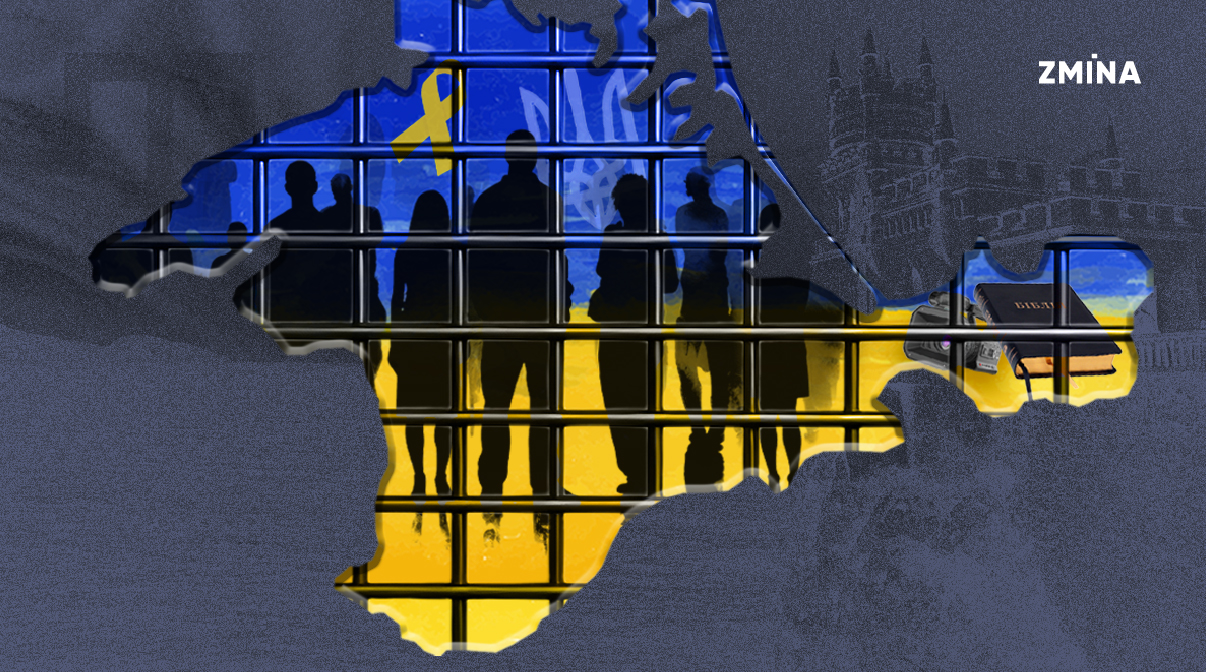
“Worse” than Eritrea
According to Freedom House’s latest numerical status assessments, which examine the factors related to the observance of political rights and civil liberties in various (including unrecognised) regions, Crimea has dropped from 4 to 2 points out of 100 possible. According to the rating, Crimea now has fewer freedoms than North Korea or Eritrea.
Such conclusions do not seem to be exaggerations, as Ukrainian human rights defenders record war crimes, crimes against humanity and other human rights violations by the occupying authorities against the civilian population of the occupied peninsula almost every day. We will mention only the most large-scale and dangerous of them.
Enforced disappearances
Among the trends that cause one of the greatest concerns is the spread and normalisation of the practice of enforced disappearances; dozens of cases a year. Sometimes these disappearances only end in severe interrogations for many hours in the basement of FSB detention facilities. A prime example of this was the case of Ediie Muslimova, the 61-year-old editor of the Crimean Tatar children’s magazine Armanchyk, who was interrogated for 36 hours without rest due to the FSB receiving an “anonymous tip”.
By contrast, the fate of at least 14 Crimeans abducted since the beginning of the full-scale invasion and whose disappearance has been linked to Russian security forces has long remained unknown. Particularly concerning is the fact that eight of the abductees are women. There is little transparency as the police do not conduct effective investigations into these crimes, the prosecutor’s office reports no violations, and the FSB informs that its investigators are not investigating criminal cases against these individuals.
Civilian prisoners
Human rights defenders know that some of these abductees are being held incommunicado in a separate FSB detention centre, also called the “Dviika”, or Simferopol’s SIZO No. 2. This is where civilians abducted in the occupied territories of Kherson and Zaporizhzhia regions were transferred in large numbers after the start of the full-scale invasion. Human rights defenders have identified by name over 150 volunteers, journalists, activists, local community leaders as well as patriotic citizens who were imprisoned in Simferopol’s SIZO No. 2 without charges, without any listing of the period of their detention and without any contact with their relatives or lawyers.
It is known that the conditions of detention in “Dviika” are inhumane due to the systematic beatings and torture of civilian prisoners, as well as deliberate moral humiliation aimed at psychologically breaking the prisoners. In this way, prisoners are being prepared for ‘cooperation’ with the FSB, whose representatives are gradually fabricating criminal cases against abducted Ukrainians. According to the human rights initiative “Crimea. Search”, at least 105 people have been held in captivity for three years without any charges; for example, the Head of Hola Prystan, Oleksandr Babych.
Spy mania
Those who are ‘lucky’ enough to become defendants in criminal cases are most often accused by Russian security forces of espionage, treason or terrorism. For example, the occupation court recently sentenced Anna Yeltsova, a student from Kherson who was abducted in December 2022 and held in complete isolation in Simferopol for almost two years. Two weeks ago, she was found guilty of espionage and sentenced to 10 years in prison, but it is still unknown whether the court considered the fact of her unlawful detention in harsh conditions for two years. Such trials are usually held behind closed doors, and an independent lawyer is not able to get into such a case or cannot tell what is happening in court due to the obligation to keep state secrets.
However, accusations of espionage are not exclusive to civilian prisoners who were abducted in the newly occupied territories and transported to Crimea. Residents of the peninsula itself are also accused of collaborating with Ukrainian intelligence. According to Crimean human rights defenders, the number of such detentions is staggering. Simultaneously, monitoring by the Irade Human Rights Initiative examining 2023 to 2024, found 74 reports of detentions of “spies”, “saboteurs”, “subversives” and “extremists” in Crimea that were recorded in public sources alone. It is worth noting that not all detentions are made public, and in some instances, entire groups of people are arrested at once, as in the case of Simferopol resident Kyryl Barannyk, where eight people were involved.
The number of ‘spies’ seems abnormal. During the full-scale invasion, 52 cases of espionage and high treason have been heard or are still pending in Crimean courts alone. For comparison, there were only seven such cases during the entire period of occupation before the invasion. As well, it should be understood that today’s figures do not yet reflect the full level of repression, as a significant number of cases are also sent to the Russian military court in Rostov-on-Don. For example, the case of Volodymyr Ananiev, who, at the age of 75, will be tried for his participation in the preparation of an assassination attempt on the collaborator appointed by the Kremlin as the head of the occupied Crimea, Serhii Aksonov, who has been under international and Ukrainian sanctions for many years.
Such an unrealistic scale of Ukrainian “intelligence work”, which is not decreasing despite the FSB’s efforts, appears to be a fabrication of active counterintelligence measures by the occupiers aimed at meeting extremely high quotas. Additionally, these tactics have the appearance of the intention to create an atmosphere of fear among the civilian population: to make them afraid to take pictures of themselves, not to mention echelons of military equipment.
Victims of this intimidation, including many people with openly pro-Ukrainian views, are sentenced to 10 to 18 years in prison. At the same time, in Russian prisons, such people are subjected to additional persecution, torture and an absence of adequate medical assistance on a massive scale. According to the Human Rights Centre ZMINA, more than 60 Crimean political prisoners require urgent medical care.
Sentences for thoughts
Along with a large number of cases of espionage and treason, there are other forms of criminal prosecution of Crimeans for expressing their pro-Ukrainian position. For example, in Simferopol, Mykola Onuk, who participated in the Yellow Ribbon movement, was sentenced to five years in prison. This movement demonstrates the existence of non-violent resistance to the occupation in the temporarily occupied territory of the peninsula.
In addition, the practice of applying new Russian legislation on ‘discrediting the armed forces’ is becoming widespread, with criminal liability for committing such actions twice within a year. As of now, there are nine criminal cases, in which four defendants have been imprisoned. To this should also be added the persecution of Crimeans for extremism and disrespect for Russian symbols of “military glory”. For example, Yevhen Shved, who had pro-Ukrainian views, was abducted and later sentenced to two years in prison for his attitude to the celebration of the victory in the “Great Patriotic War”.
Policy of suppression
It is worth noting that the dozens of criminal cases mentioned above are only the most visible part of a separate policy of the occupational security forces aimed at the total suppression of any form of pro-Ukrainian position or disloyalty to the occupation.
These processes can be divided into three levels. The top level is the criminal prosecution of the most active citizens who do not hide their attitude toward the occupiers. These are the politically motivated persecutions mentioned above.
At the intermediate level, law enforcement agencies ensure mass repression against individual (non-systematic) expressions of sympathy towards Ukraine, including listening to Ukrainian songs or using the colours of the Ukrainian flag in daily life. Repression at this level takes the form of a set of sequential actions, which usually includes beatings, searching the home of the accused, the confiscation of all personal cellphones and computers, detention, the drafting of a report, creating a humiliating video recording involving an apology, the application of an administrative fine or arrest, spreading humiliating videos in the media and social networks along with personal information, as well as dismissal from work and/or business inspections. As of now, there are at least 1,200-1,300 such cases, and the number is increasing daily.
At the lower or basic level, which covers a large number of the occupied peninsula’s population, general public hostility and a pattern of aggressive behaviour towards any actions that could be interpreted as pro-Ukrainian is being formed. The formation of an aggressive attitude towards people who condemn the war and support Ukraine is the largest process within the policy of suppressing resistance. However, these actions of the occupiers have yet to be thoroughly researched. The only action that has been recorded is the inaction of the police in relation to illegal actions aimed at “Ukrainian waiters” – the term used to describe Crimeans with pro-Ukrainian views.
Repression of freedom of expression
This repressive policy has a direct and very visible impact on freedom of expression. Since the beginning of the occupation of Crimea, one of the first steps was to purge independent media. In the first year, their number was reduced by 88%. Russian special services have been cracking down on freelancers and citizen journalists for an extended period, including abductions, torture and fabrication of criminal cases, as was the case with Vladyslav Yesypenko and Iryna Danylovych. A total of 18 Crimean journalists are currently incarcerated, and this list may be expanded at any time. As in other areas, pressure on journalists is not limited to criminal prosecution.
Even before the full-scale invasion, it became dangerous for journalists to cover high-profile events, such as spontaneous solidarity actions outside “courts”, “elections” or single-person pickets. They could be illegally detained and often sent to prison, ignoring the fact that they were performing their professional duties. Since February 2022, it has become dangerous to write anything outside the official agenda. A striking example is the persecution of the Qirim newspaper for publishing a speech by the UN Secretary-General on the situation of human rights violations in occupied Crimea. The Russian security forces considered this to be false information, and so they searched and detained the editor-in-chief and founder of the newspaper, seized several computers from the editorial office, and imposed six fines of around 8,000 euros.
Unlimited repression leads to a certain degree of self-censorship among many journalists. In the context of the total blocking of Ukrainian websites, Facebook, Instagram and partially YouTube, as well as the rather effective fight to suppress VPN services in the occupied territory, there are almost no alternative sources of information to Russian propaganda.
Religious persecution
Since the beginning of the occupation, Crimean residents have been subjected to restrictions not only on their right to freely express their opinions, but also on their right to freely practice their religion. Crimean Muslims belonging to the political and religious association Hizb ut-Tahrir have been subjected to the most extensive persecution. According to human rights defenders, currently, 119 Crimean Muslims of this movement are incarcerated. All of them are accused of terrorism, and most of them have already been sentenced to 10 to 19-year prison terms. Several more Muslims have recently been abducted and have not yet been found, namely Farkhad Saliiev, Server Aliiev and Ismaila Shemshedinova. Additionally, last year, the occupiers seized a mosque from the Alushta religious community and liquidated the association itself. Representatives of other Muslim organisations belonging to the “Tavriya Muftiyat” also lost their two religious schools (madrasas). In addition, security forces conduct periodic searches, detentions and arrests of Muslims who do not obey the Crimean Mufti, who is controlled from Moscow.
The second most persecuted religious group is the Jehovah’s Witnesses, which has been forced to stop worship in its churches since 2017 because the organisation was recognised as banned in Crimea. Despite compliance with Russian requirements, as of today, 32 people have been criminally prosecuted. Of these, 11 have already been sentenced to imprisonment, and 16 are under investigation or awaiting verdict.
Meanwhile, representatives of the Ukrainian Orthodox Church lost all their churches in Crimea. Some of the premises were transferred for other purposes, while others were dismantled, such as the Holy Cross Exaltation Church in Yevpatoria, which was demolished via bulldozer.
Persecution of lawyers, human rights defenders and activists
Since the full-scale invasion, the Crimean institution of the independent legal profession has been subjected to unprecedented oppression. Among the 12 lawyers who were regularly involved in politically motivated trials and the defence of other rights of local residents, four were disbarred, four were subjected to administrative arrests, three to detention and administrative fines, and one was criminally prosecuted. All of this has led to a significant reduction in information on the status of certain trials and has significantly limited the ability of new victims to obtain quality protection of their rights. Some of the lawyers stopped taking on high-profile cases related to the actions of the FSB due to such scrutinization and repression.
In addition to lawyers, pressure on Crimean activists and human rights defenders has become more noticeable. For example, Abdureshyt Dzhepparov was subjected to administrative arrests and fines twice, representatives of the Crimean Solidarity Human Rights Association Lutfiie Zudiieva and Liliia Hemedzhy were attacked, and several unjustified searches took place in the homes of many representatives of the Crimean Tatar national movement. All of these actions were aimed at reducing the amount of information regarding the level of repression and the human rights situation in the occupied Crimea.
Extensive restrictions
At the same time, the human rights situation is indeed very difficult not only for activists and journalists, but for the general population. On the Kerch Bridge and at the administrative border of Crimea, there are constant filtration measures – checking the content of phones, interrogations, and tattoo searches. Occasionally, so-called “anti-terrorist exercises” take place in different regions of the peninsula, during which settlements and mobile communications are completely blocked, after which security forces conduct random searches, inspect vehicles, and check phones. Recently, on 22 February 2025, such exercises took place in the Saky and Bakhchysarai districts and in Hurzuf.
Farmers in the northern and western regions of the peninsula are suffering due to the construction of fortifications and military deployment, where land, farm buildings, as well as hotels and cafes on the coast, are being taken for these purposes. This is being conducted without any compensation or procedures. At the same time, the ‘nationalisation’ of property of people allegedly involved in “unfriendly actions against Russia” is gaining rapid pace. Since the beginning of the invasion, 1,845 properties have been seized, and another 720 have already been confiscated this year. Against the backdrop of this policy, many entrepreneurs are being forced to make systematic “voluntary” contributions and donations to the “SVO”, and participate in the so-called elections of the Russian authorities and propaganda activities to create a “patriotic atmosphere”.
Forced mobilisation
One of the most striking examples of serious human rights abuses was the so-called partial mobilisation of residents of the occupied Crimea in September-October 2022. Certain districts and villages were surrounded by the “Rosgvardia”, the military and police issued orders to everyone they found at home or on the street, confiscated their phones and then forcibly brought them to the military registration and enlistment offices.
According to some estimates, the number of mobilised Crimeans was over 23,000. The “Cargo 200” project by the Crimea.Realities editorial board found obituaries of 93 dead mobilised from Crimea. Human rights defenders of the initiative “Tribunal.Crimean Episode” note that this figure of killed mobilised persons should not be considered complete, as almost half of the obituaries (48%) conceal information about how the deceased came to be in the war zone — voluntarily or forcibly.
In addition to mobilisation, soon after the beginning of the occupation, Russians began conscripting the local residents for military service. According to the head of the Crimean Human Rights Group, Olha Skrypnyk, almost 40,000 Crimeans have served in the Russian army over the past 11 years. The number of criminal cases for draft evasion indicates the forced nature of recruitment into the Russian army. As representatives of the Crimean Process organisation noted, since the occupation of Crimea and before the full-scale invasion of Ukraine, Crimean courts have heard 234 criminal cases under the article on draft evasion. From 24 February 2022 to 27 November 2024 (the date of publication of the report), another 259 criminal cases were heard or were pending in courts. Of particular concern are reports of Crimean conscripts being sent to the war zone. The “Cargo 200” project recorded 11 obituaries of conscripts; the latest case being from January 2025.
Militarisation of education and leisure
At the same time, such actions have not yet caused any noticeable public discontent. This is due to both harsh repression and the total militarisation of the education system and all areas of leisure in general. Almost all schools have offices of various youth military organisations, and the number of members of the Russian Ministry of Defence’s youth military association, Yunarmia, in Crimea reaches 22,000. On a regular basis, all Crimean schoolchildren are involved in writing letters to the Russian military, collecting aid for them, meeting with “veterans of the armed forces”, learning to use weapons, etc.
Read also: There will be no lasting peace without liberation of Crimea – Mejlis Chairman Refat Chubarov
The entire system of extracurricular education, as well as the work of cultural and sports institutions, is focused on “patriotic education”. At the same time, the younger generation is being indoctrinated to form an exclusively Russian identity. This creates very serious challenges for the reintegration of the peninsula’s population after de-occupation and is one of the arguments that the position of postponing the issue of Crimea’s liberation is unacceptable.

